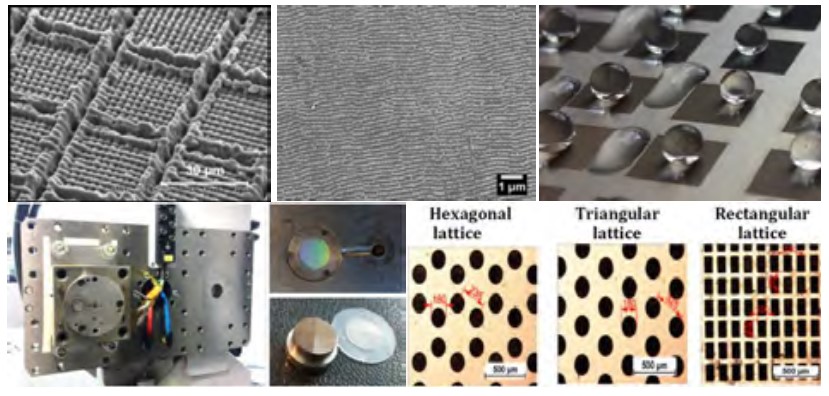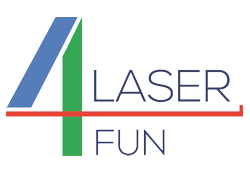Results of the work in the Laser4Fun project has been published as:
Antonio Ancona, Andrés Fabián Lasagni, Gert-willem R. B. E. Römer, Stefan Dimov, Rainer Kling, Thomas Kiedrowski, José Luis Ocaña, Elmar Bonaccurso, Carsten Werner, Andrés Escartín Barduzal. LASER4FUN: the European Network on short pulsed laser micro/nanostructuring of surfaces. 21st International Symposium on Laser Precision Microfabrication, 23 – 26 June 2020.
Abstract
Bio-inspired surface structures, containing features at the nanometer/micrometer scales, offer significant commercial potential for the creation of functionalized surfaces. To this extent, technologies to modify surfaces instead of creating composites or applying coatings on surfaces can offer new industrial opportunities. The aim of the LASER4FUN project was to structure surfaces embedding properties for industrial applications. The research programme resulted in insights and applications beyond the current state of the art through the development of new surface micro/nano-structuring/patterning methods by using emerging short pulsed and ultra-short pulsed laser technologies, i.e. Laser-Induced Periodic Surface Structures (LIPSS), Direct Laser Interference Patterning (DLIP), Direct Laser Writing (DLW) and two hybrid technologies. New laser-induced surface textures, and parameters to control these, were developed. Optimized laser-induced surface textures were developed for various surface functionalities for applications in the fields of e.g. tribology, aesthetics and wettability. In addition, methods, strategies and tools to allow production of these surface textured at high industrial production rates were developed. The project created an International Training Network (ITN) for Early Stage Researchers (ESRs) in the exciting field of laser-material processing, consisting of 14 doctoral students recruited by 10 international partners with wide experience in the field: 3 academic partners, i.e. Polytechnic University of Madrid (Spain), University of Birmingham (UK) and University of Twente (Netherlands), 4 research centers, i.e. Alphanov (France), Consiglio Nazionale delle Richerche (Italy), Fraunhofer Institute (Germany) and IPF-Leibniz-Institute fur Polymerforschung Dresden (Germany), and 3 industrial partners, i.e. Robert Bosch (Germany), Airbus (Germany), BSH Home Appliances (Spain). The close cooperation among multidisciplinary partners have fostered knowledge transfer to cross the Death Valley between science and the markets. Additionally, their participation in the LASER4FUN project have impacted highly the ESRs employability to knowledge-intensive companies/institutes that are the key for EU welfare. During the project duration more than 50 publications were prepared and more than 50 dissemination events (targeting both academica, industry and the general public) took place.

